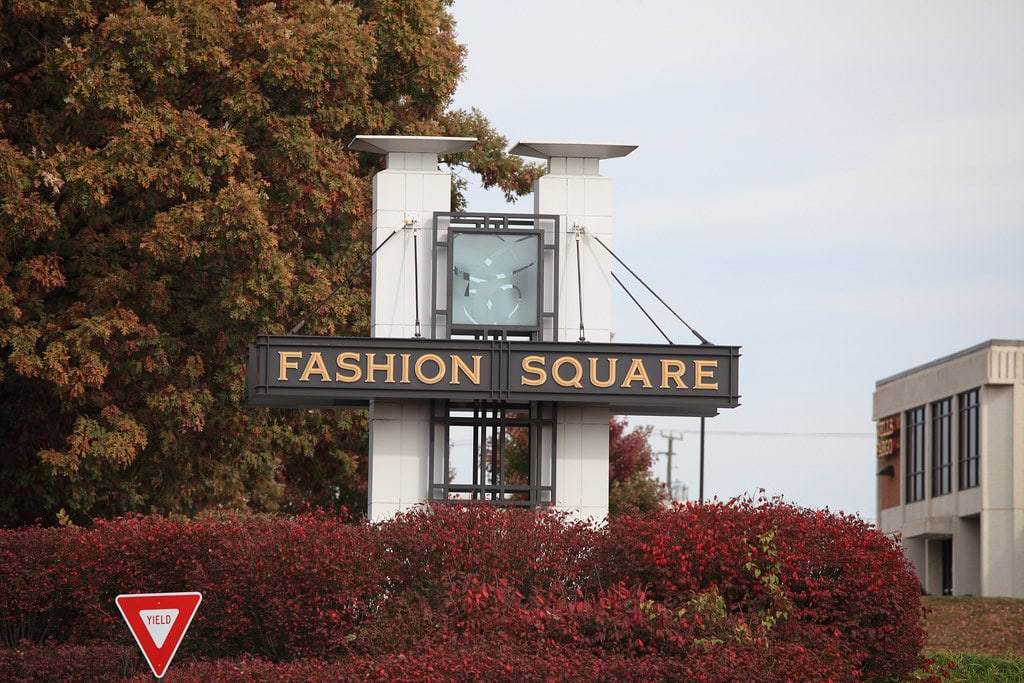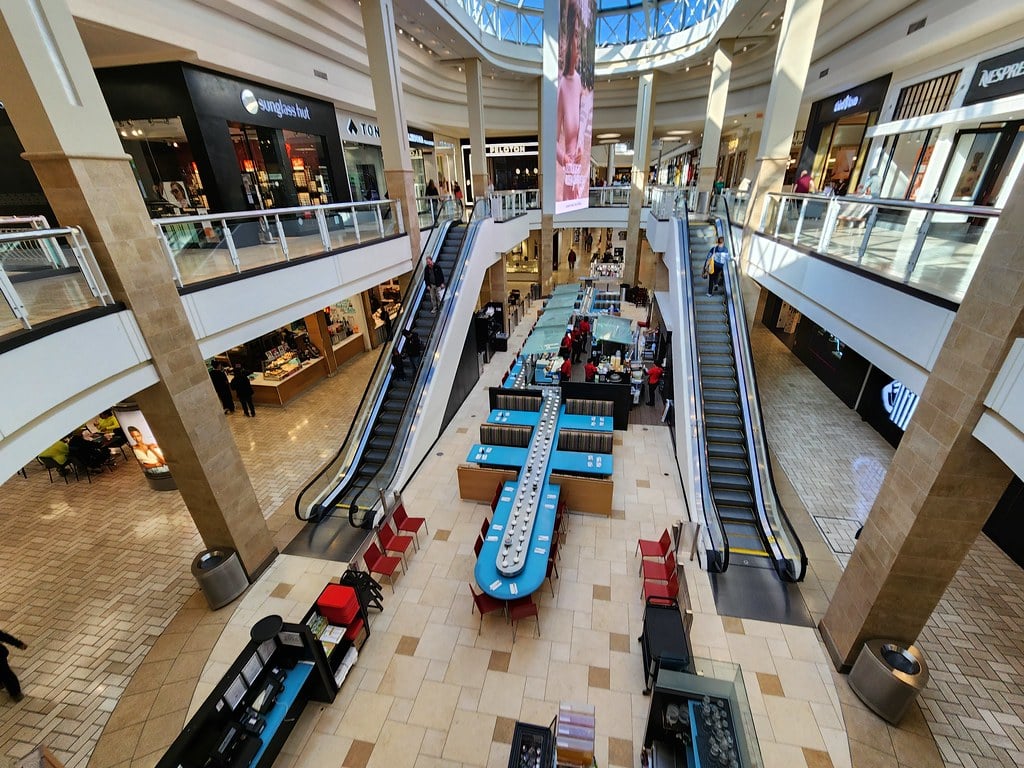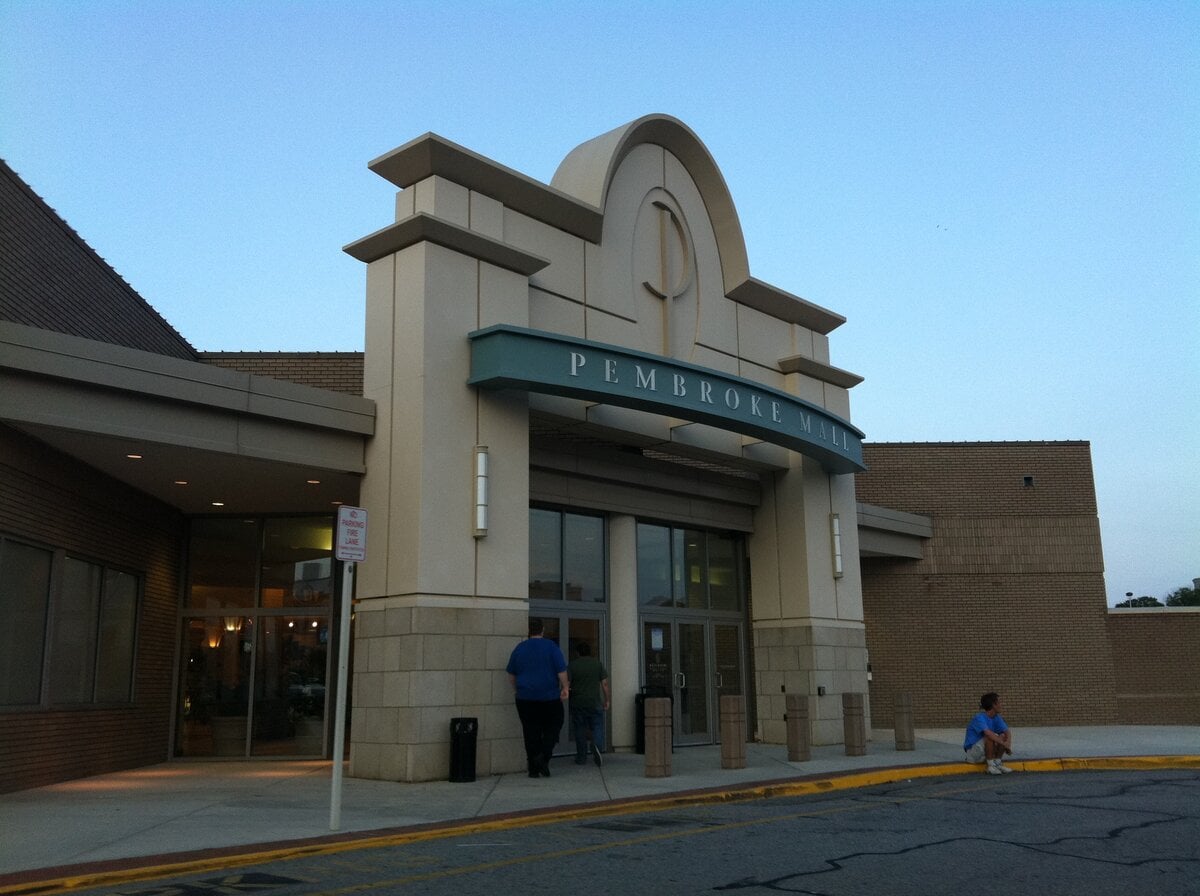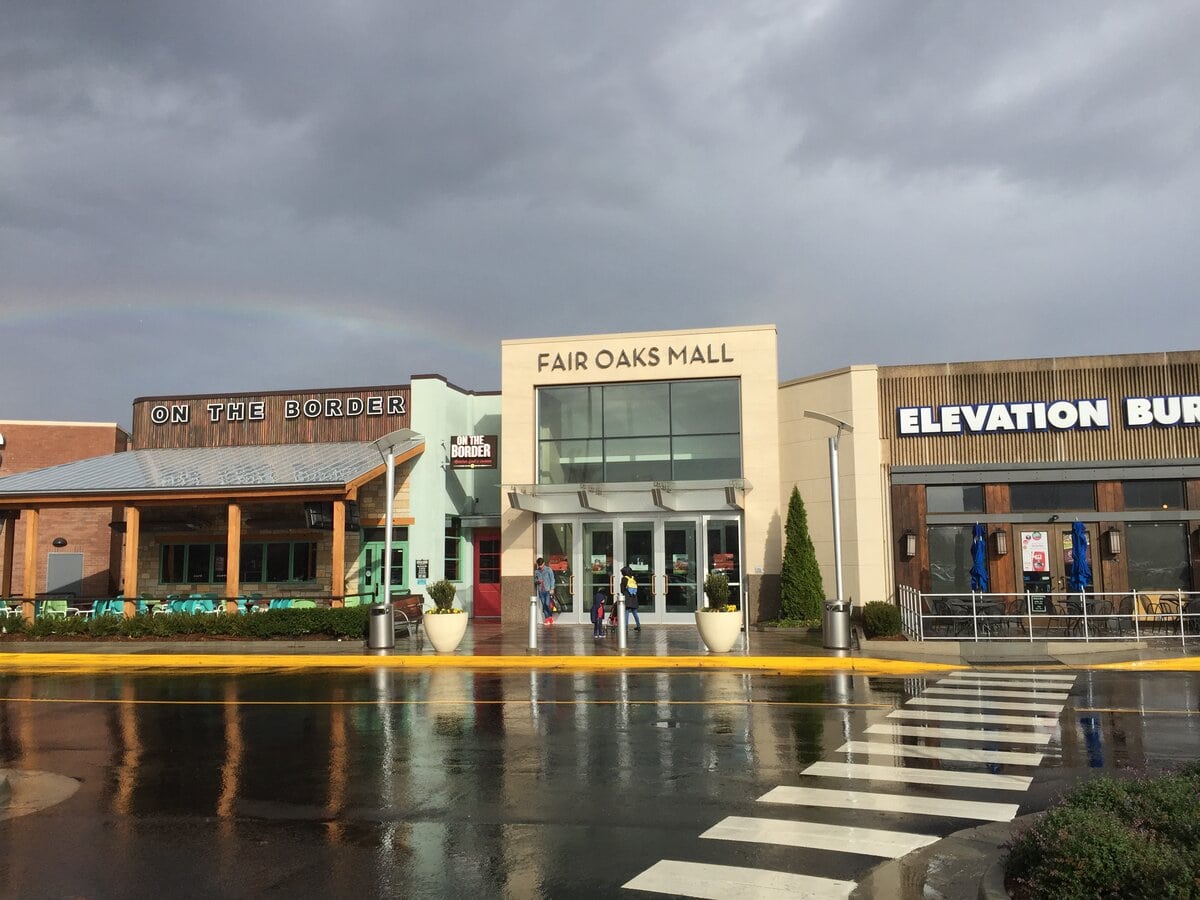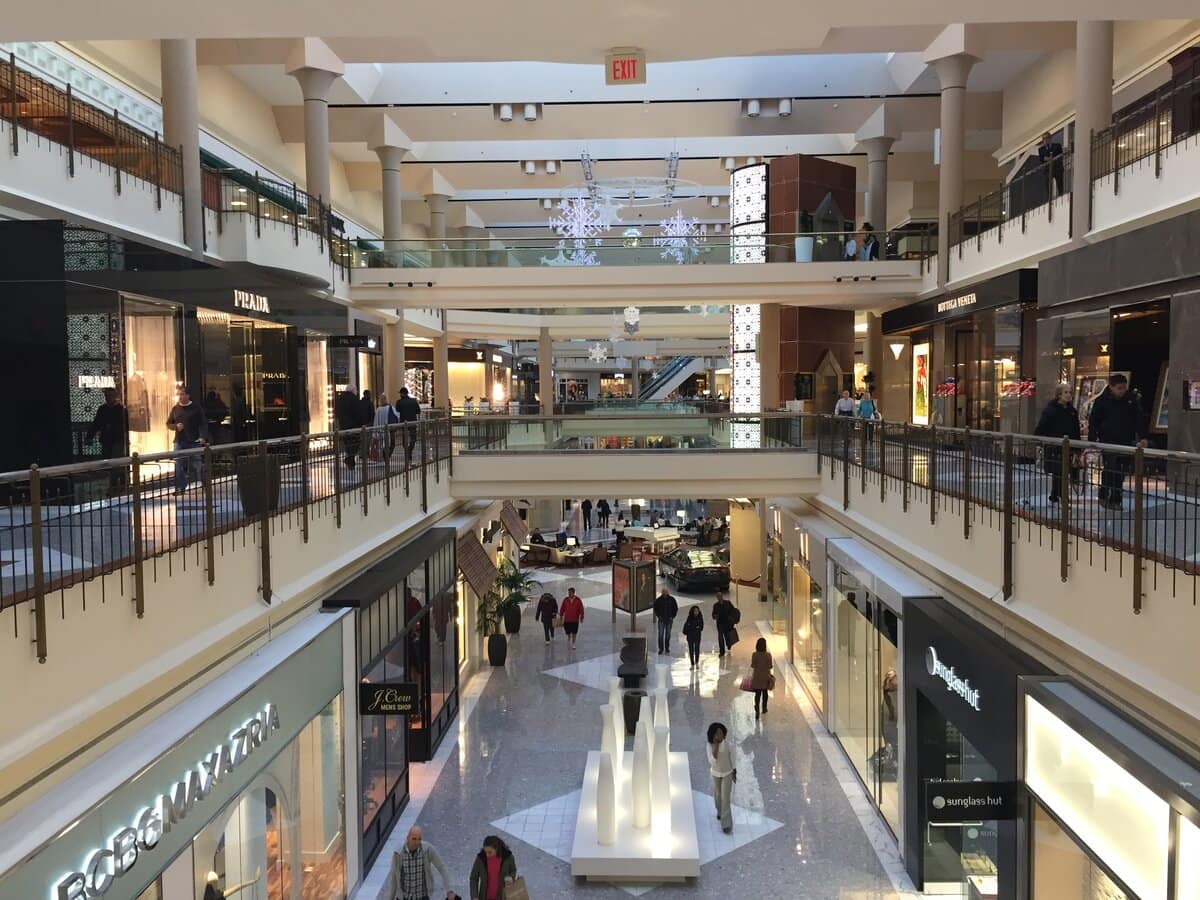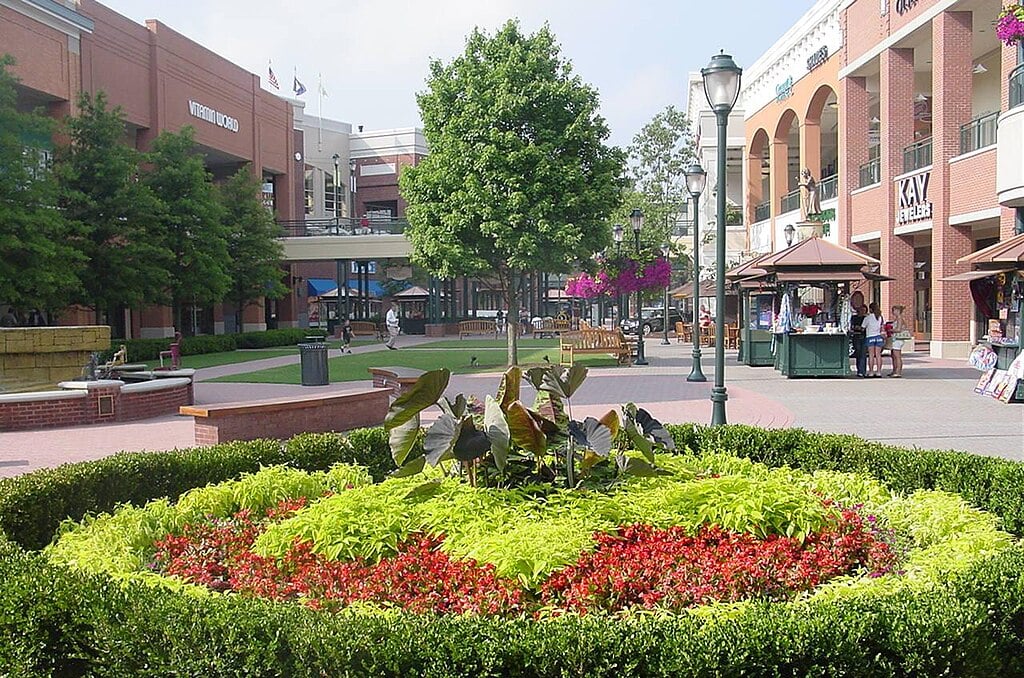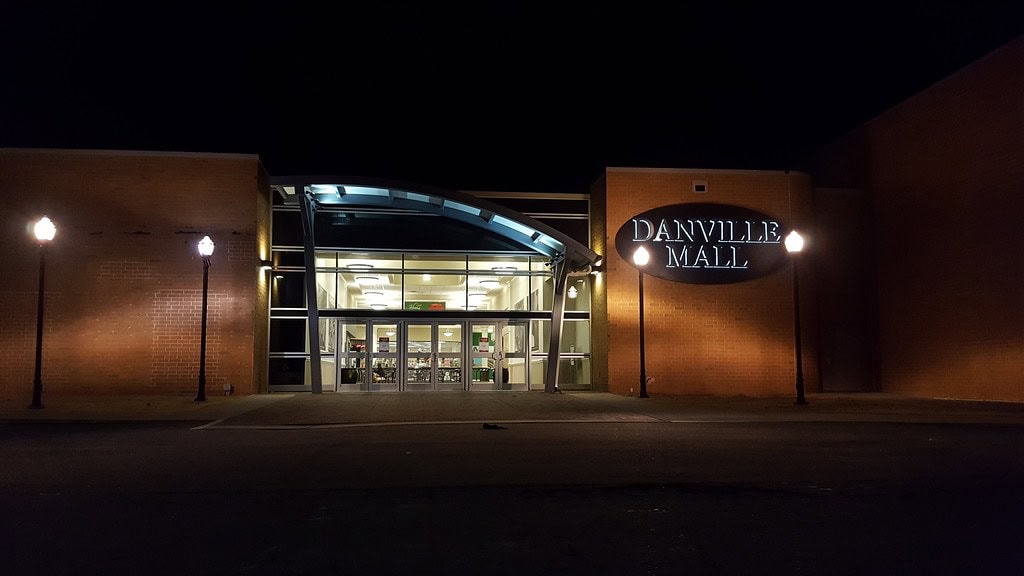The Mall That Changed the Map
Virginia Center Commons opened in 1991, and honestly, it didn't just add another mall to suburban Richmond. The thing completely shifted, including where people shopped and how retail money flowed through the area.
They built it right off Interstate 95, which gave it this edge that just pulled shoppers away from the older centers that had been doing fine for years.
The stores that used to define shopping in different parts of the region all ended up moving to this one spot in Glen Allen. For a while there, if you wanted to shop, you pretty much had to go where everyone else was going.
Launch Year Retail Takeover (1991-1997)
Virginia Center Commons opened with a tenant lineup that was designed to displace its neighbors.
The new mall offered major anchors: Proffitt's, Leggett (a Belk division), JCPenney, Sears, and Hecht's. That mix, especially JCPenney and Sears, gave it a foothold over aging competitors.
Azalea Mall, which had opened in 1963, was already struggling when VCC launched. After losing enough regular traffic to stay afloat, it closed permanently and was later demolished.
Fairfield Commons, rebranded from Eastgate Mall, lost its Sears store directly to Virginia Center Commons.
That center shut down in 2015 and was redeveloped as an open-air retail plaza.
Willow Lawn lost JCPenney during this same early-1990s shift. Without it, the center stopped functioning as a regional retail destination and leaned into a smaller-format commercial role.
The losses weren't temporary. The departures helped lock Virginia Center Commons into the top retail position for the area, at least for the next decade.

Ownership Transfers and Retail Downshifts (1998-2014)
By the late 1990s, the landscape inside Virginia Center Commons started to shift. Proffitt's and Leggett, both original anchors, were converted to Dillard's stores in 1997 and 1998.
The consolidation followed national trends in department store branding, but inside the mall, it meant two anchors now carried the same name.
The variety shrank, even if the square footage stayed the same.
The shift away from distinct retail anchors came gradually. In 2011, Dillard's shuttered the former Proffitt's building.
Burlington Coat Factory took the space soon after. The other Dillard's, once Leggett, was downgraded to outlet status and then closed later that same year.
American Family Fitness later filled its footprint. No new department store moved in. The mall wasn't empty, but its core began to fracture. Anchor conversions signaled something no brochure would say directly: the value proposition had changed.
Simon Property Group held onto the mall during this time. It remained in their portfolio until 2014 when it was spun off to Washington Prime Group as part of a broader divestment of non-premium retail properties.
That move wasn't isolated. It reflected a wider pullback from second-tier malls across the country.
Anchor Closures and Market Exit (2015-2018)
The next set of closures landed harder. In spring 2016, Macy's announced the end of its Virginia Center Commons location.
It was part of a 36-store national pullback, but locally, the departure marked the loss of the former Hecht's anchor. The store had once been central to mall traffic, especially during holidays.
Now, the escalators stopped, and the lights turned off for good.
In November 2018, Sears followed. Its Glen Allen location was one of 40 stores dropped in an ongoing attempt to keep the parent company afloat.
The closure wasn't delayed or reconsidered. The store shut down in early 2019, taking with it another full-size anchor and another stretch of empty parking lot.
The mall itself had changed hands again just before these closures. In January 2017, Kohan Retail Investment Group bought it.
Kohan had built a portfolio around distressed malls, and VCC now fit that profile. Their involvement didn't come with a long public redevelopment plan.
Leasing continued, but the high-profile losses made recovery harder to sell.
By the end of 2018, two of the mall's original anchors were gone, and the mood around the property was changing. The questions shifted from how to revitalize to how long it would hold.
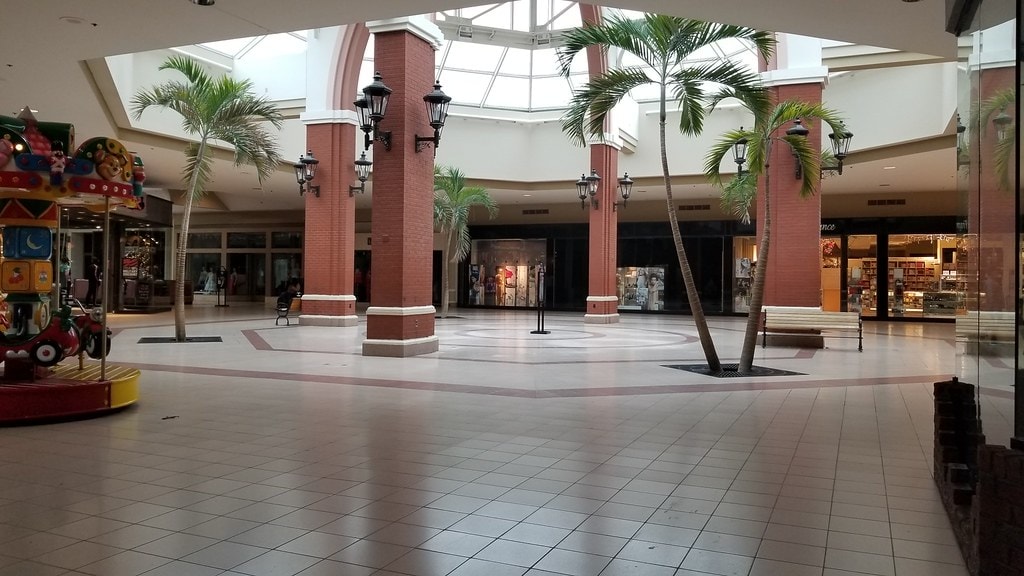
Property Acquisition and Structural Phase-Out (2019-2021)
In early 2020, the mall changed hands again. Virginia Center Commons was sold for $8.3 million to VCC Partners LLC and Shamin VCC LLC.
The deal included not just the main structure but parcels that once held its retail anchors. By this point, Macy's and Sears had already closed, and JCPenney wasn't far behind.
The property wasn't repositioned for retail. It was prepped for teardown.
Demolition work started in January 2021. Crews began clearing the former Macy's and Sears buildings first.
That same month, the JCPenney building was also acquired by the redevelopment group. American Family Fitness, the only large tenant still operating, was left untouched.
Everything else was scheduled for removal.
The plan was tied to new construction, not restoration. County records and project updates outlined a mixed-use replacement.
This included a hotel led by Shamin Hotels and a publicly backed indoor sports facility. The strategy didn't hinge on reviving the enclosed mall model.
It focused on clearing what remained and building toward higher-use real estate.
Full Closure and Lease Terminations (2022)
By October 2022, no public-facing stores remained. The mall's final tenants had their leases terminated that fall. Some had lasted longer than expected, operating in a half-vacant space surrounded by shuttered anchors and taped-over display windows.
But on October 31, 2022, Virginia Center Commons closed its doors entirely.
The closure wasn't abrupt. It followed a phased reduction in open areas and utilities, some of which were shut off well before the last day. Notices were posted months in advance.
Security remained on-site, but public access stopped the moment leases ended.
County officials moved ahead with planning documents while contractors began fencing off redevelopment zones. The mall's name stayed on maps a bit longer, but inside, nothing operated.
It was an empty frame waiting for conversion.
Redevelopment Groundwork and Mixed-Use Rollout (2023-2024)
The $50 million Henrico Sports & Events Center opened in late 2023, occupying part of the former mall's footprint.
It wasn't added onto the shell of the old complex; it replaced it. The building covers 185,000 square feet and serves as an anchor for the broader redevelopment project.
County officials had already committed to positioning the site for year-round events, tournaments, and practices. What used to be commercial retail now supports multipurpose athletic use.
In April 2024, Henrico County broke ground on two hotels: a Residence Inn and Suites and a Home2 Suites. Both are extended-stay brands, and their development came with plans for two full-service restaurants.
All four projects sit adjacent to the sports center, stitched into the larger design of the former mall's 70-acre parcel.
Engineering and layout came from KBJW Group, which led work on grading, drainage, and infrastructure.
Their site designs included new utilities, traffic coordination, and reconfiguration of access points that once served anchor store parking lots.
The language around the project avoided nostalgia. The plans were framed around current land use, long-term maintenance, and maximizing utility.
Where the mall once pulled in shoppers with department store names, the new development sold square footage as a multi-function asset.
Main Mall Flattened and the Footprint Recast (2023-2025)
After the last leases ended in October 2022, the remaining core of Virginia Center Commons stood quiet for only a few months.
Demolition of the central enclosed mall began in early 2023, removing everything near the already-cleared Macy's and Sears plots.
American Family Fitness, which occupies the former Dillard's/Leggett space, remained standing and operational. Everything else was removed down to the foundation.
No facade or framing was retained. The demolition was handled in stages, with fencing and equipment visible into the summer.
The plans for the former mall structure go beyond hotels and sports. A mix of walkable streets, green spaces, and commercial pads is planned along the former corridor.
Residential projects include 279 apartments, some income-qualified, and a slate of future townhome parcels.
No indoor retail or enclosed structures are scheduled to return. A ground-level grid of buildings, trails, and housing stock will replace the core of Virginia Center Commons.
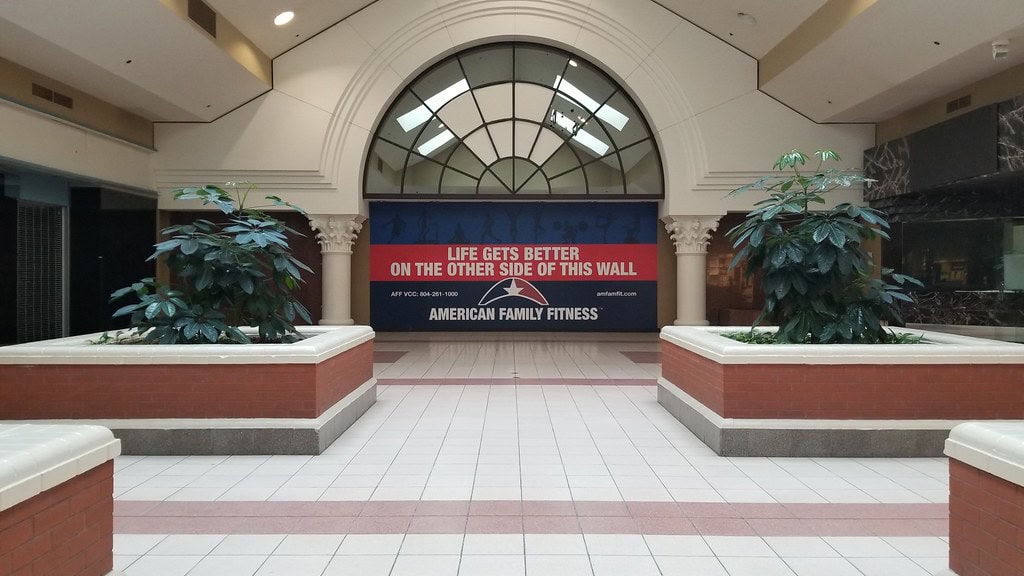
🌿

